When I started using RightStart Math and we’d play the game Go to The Dump, game A3 in the Math Card Games book, I apparently didn’t read the directions well and have come to realize we were really playing Fish at The Dump, game A5 in the Math Card Games book. I wonder how many of you are also playing Fish at The Dump??
My grandsons, Kasen, age 7 and Hayes, age 6, came to spend the week with me. Go to The Dump is an addition game we played when my children were young and knew my grandsons were finally at a place to play it themselves.
Before playing the game, I worked with them a little on subitizing. We then played around with the AL Abacus until I knew they had a basic understanding of what makes ten. Now it was time to play the game.
Fish at The Dump is played the same way at Go to The Dump except you can ask anyone for a card. Go to The Dump’s directions tell you to ask the person to the left for a card. All along when I thought I was playing Go to The Dump with my kids, we were really playing Fish at The Dump because I always allowed my children to ask whoever they wanted for a card. I’m sure there is a lesson in here about the importance of reading directions. 😊
We played our game on the floor because the kids like to move around, and this gives them more space to do so. I counted out six each of the Basic Cards 1 to 9 then shuffled to get them mixed up. Did you know that shuffling seven times is the magic number for making sure the cards are mixed enough? So that’s what I did, I shuffled the deck seven time and dealt five cards to each of us. The remaining cards went in the middle for our “dump” pile.
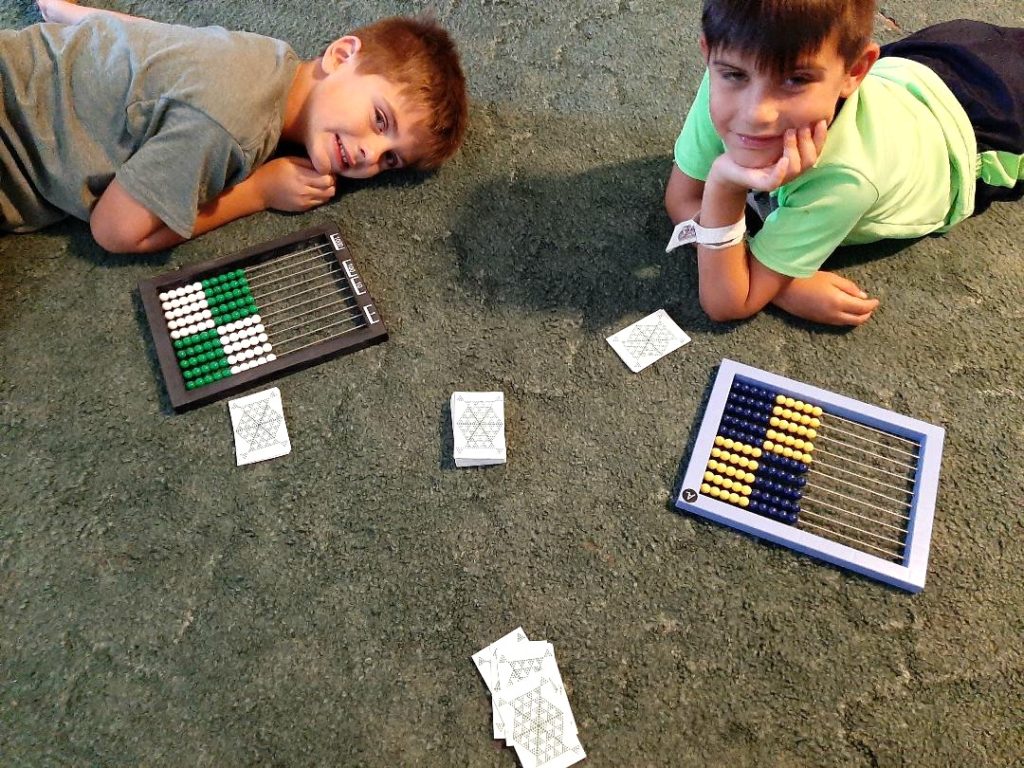
Normally you would not show your cards to the other players, but because this is a new game for the kids, they showed me their cards at the beginning.
By the way, notice the green and white abacus with the dark frame? This was a special edition abacus that I just had to have! You can still get some of these special abacuses….
The object of this game is to pair two cards that equal ten. Before you start asking for cards though, you need to look at your hand and see if you have two cards that equal ten when added together.
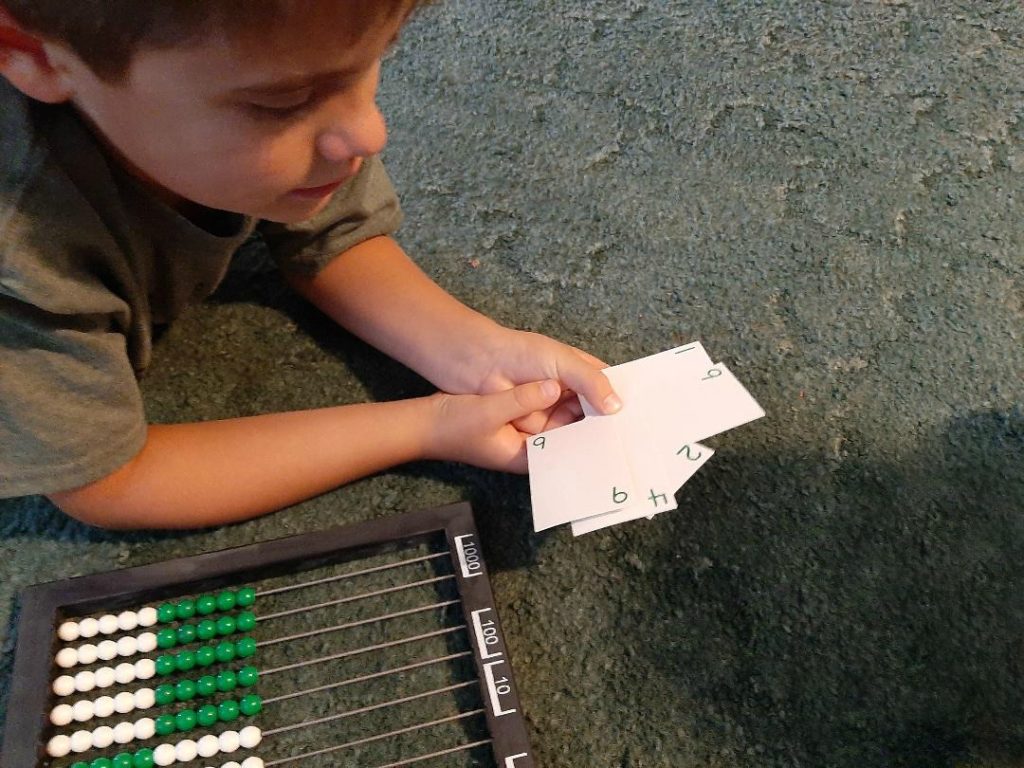
Neither of my two grandsons knew what two numbers when added together would equal ten, so we utilized the AL Abacus. Since they are new to this game, to subitizing, and to the abacus, I helped them by entering the numbers on the abacus. This allowed them to see the other number needed to make ten.
Kasen had a 9 and 1 and found it equaled 10 on the abacus, making him very happy.
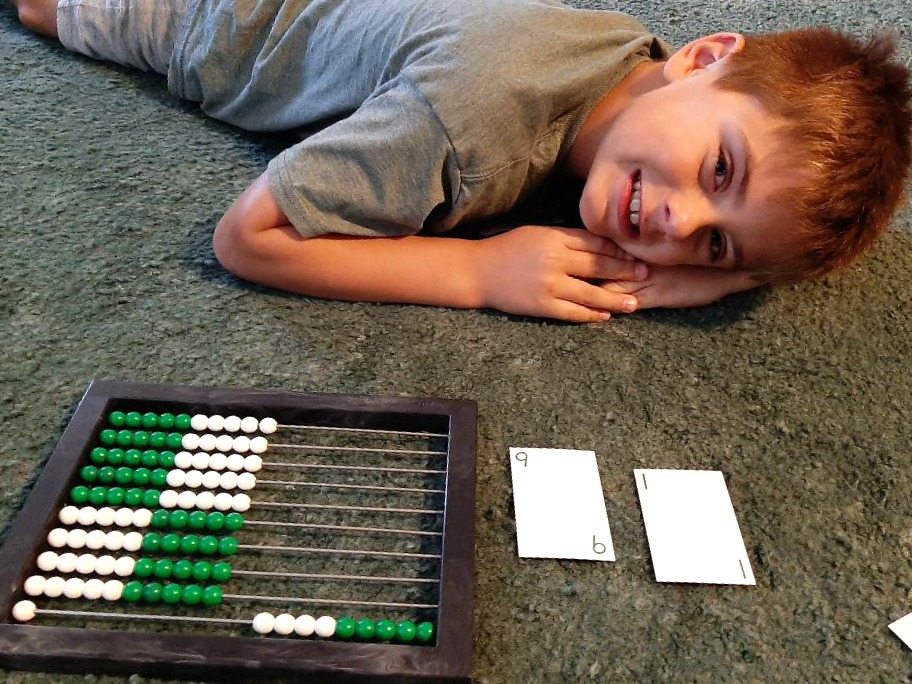
Hayes then looked at his cards, but he didn’t have any matches.
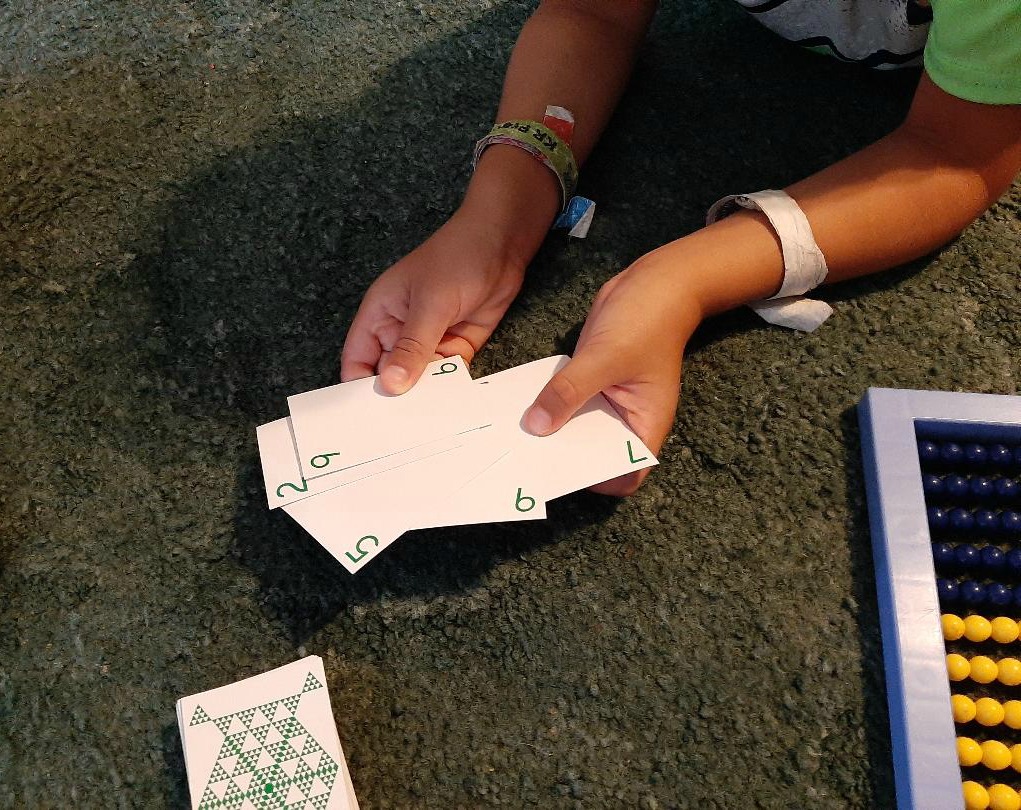
When it was time to start the game, we let Hayes go first because he is the youngest.
On one of Hayes’s turns he wanted to use his seven. I entered 7 on the abacus which then allowed him to see he needed a 3. Not having a 3 when asked, I said, “Go Fishing at the Dump” which he thought was pretty funny. Technically you are to say “Go to the Dump” but since the game is titled Fish at The Dump, I took some liberties.
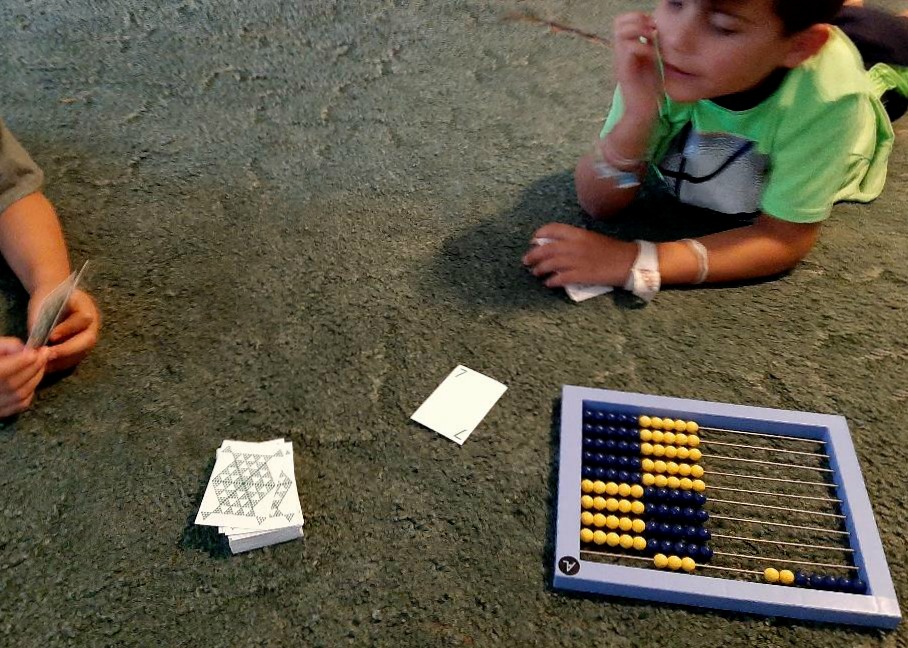
During Kasen’s turn he had a 4 and looking at the abacus after I entered the 4 beads (reminding him that all the light colored beads are five), he saw he needed a 6.
Unfortunately, the person he asked did not have a 6 to give him. In going to the dump he proceeded to pick up a 6, which was quite exciting for him.
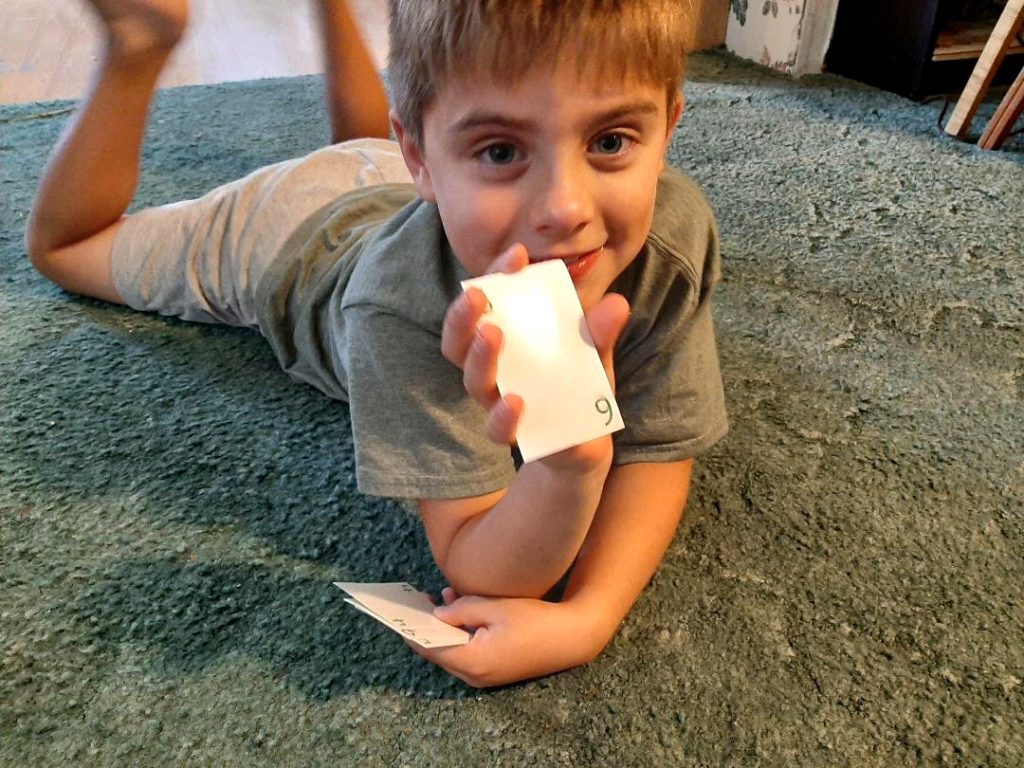
He laid the cards down because 4 and 6 make 10.
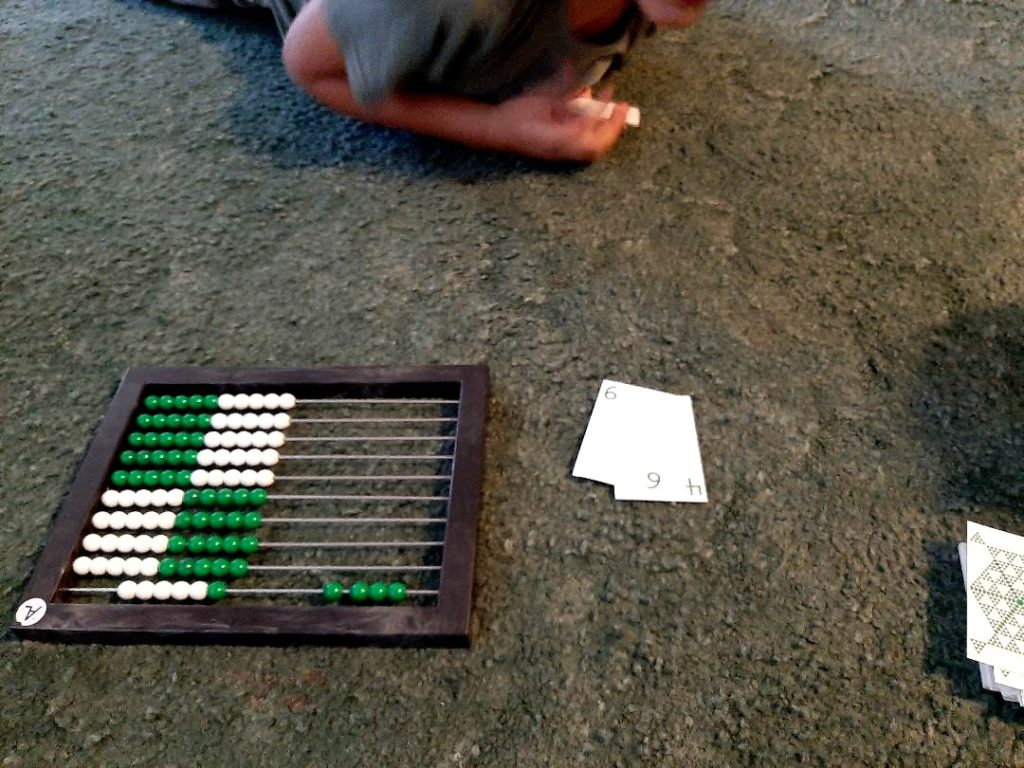
We continued playing and asking each other for cards. They especially loved when they could tell someone to “Go to the Dump” or “Go Fishing in the Dump.”
At one point Kasen had a two and didn’t know what was needed to make 10. He entered 2 beads and saw what was needed. As the game progressed, he started to remember what two numbers made 10. And he loved moving the all the beads over when he had two cards that made 10.
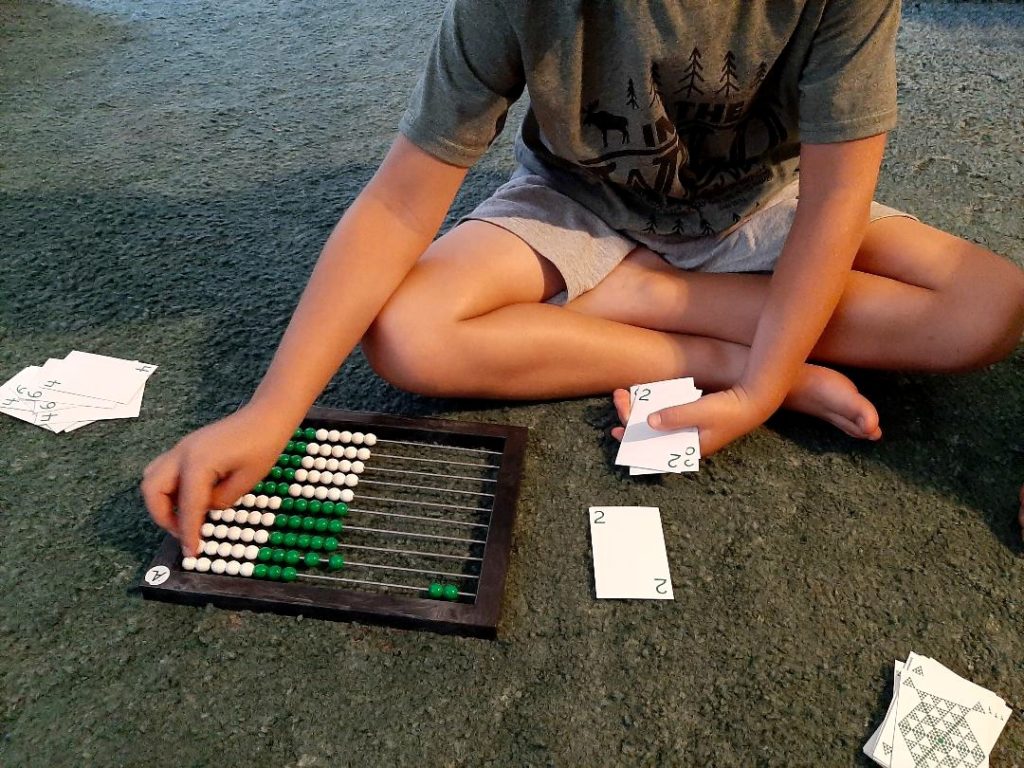
We played this game for about fifteen minutes. Did you know that ten to fifteen minutes of playing one of the math card games is equal to doing a worksheet? Good job, boys!
It was interesting playing this game with my grandsons because I’ve only played it with my own children who could subitize. It again reminded me how important subitizing is and how the abacus makes it easy with the beads colored in sets of five.
So, now that you see the slight difference in playing Go Fish at The Dump and Go to The Dump, which one do you prefer playing? And do you have any family variations? If so, tell us about it below!

I did not know that seven is the magic number for shuffling a card deck…I don’t think I’ve ever shuffled a deck that many times in a row. I need to try that next time!
Also, I’m jealous of your special edition abacus!